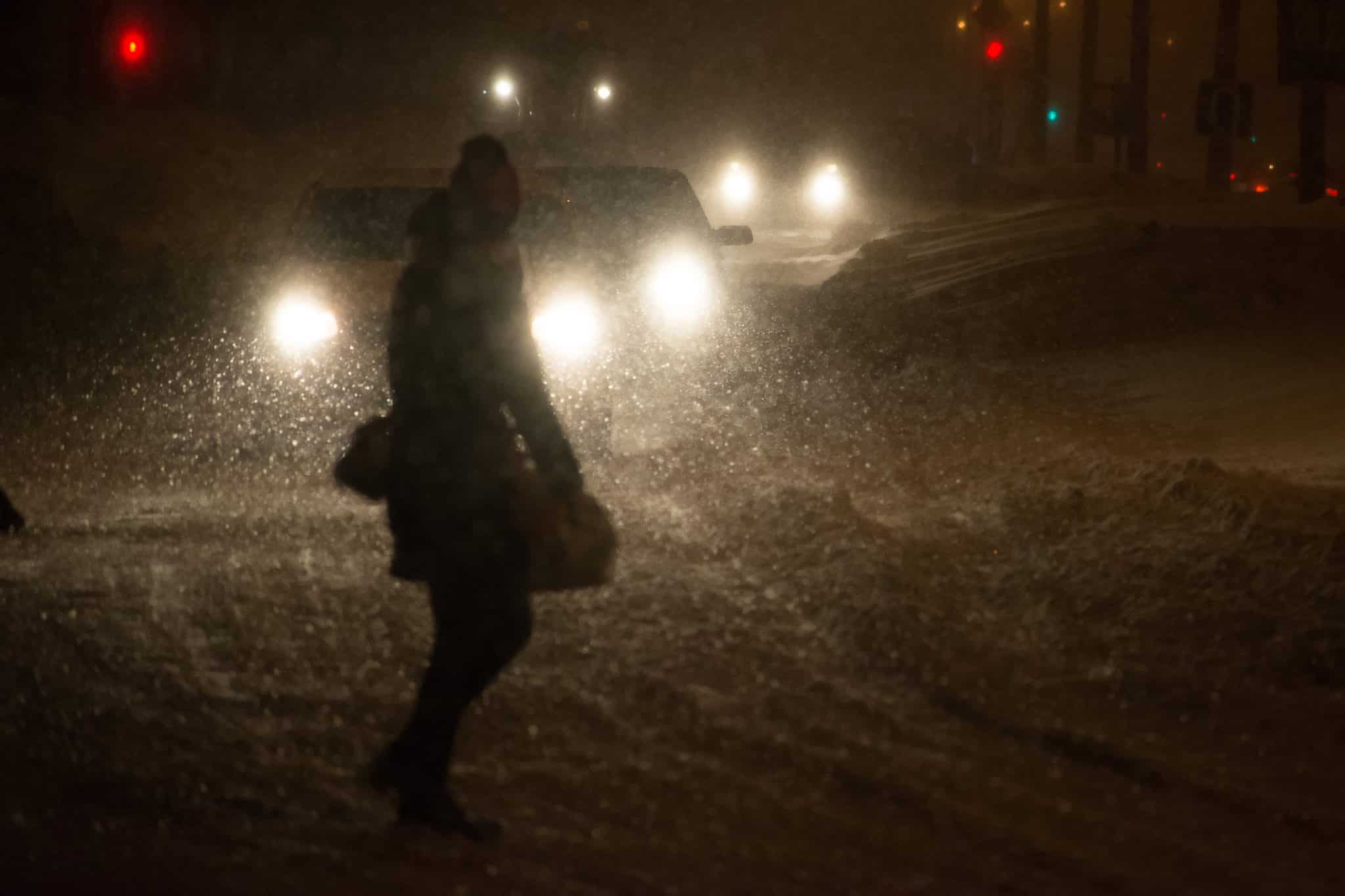
Most Canadian pedestrians are familiar with the challenges of walking on snow and ice-covered streets, but everyone should also be aware of the risks of walking in low-visibility conditions. Winter is a particularly dangerous time, as the shorter days and other factors contribute to make it difficult for drivers to see obstacles and risks clearly. In the Canadian winter the sun sets earlier and it seems much darker than at other times of the year. Poor weather at this time of the year is also a factor, with falling snow and other precipitation contributing to lower ranges of visibility. With continued restrictions on indoor activities due to the COVID-19 pandemic, there are more pedestrians walking about, making it more challenging for drivers and pedestrians to see each other. Anecdotally, it seems that drivers are even less patient than they used to be. The annual switch from daylight savings time also contributes to the challenge of walking safely in the dark, and it is estimated that accidents involving pedestrians nearly double at this time of year due in large part to lack of visibility.
If you are just walking to the corner for a stretch during the daytime, it might seem a bit excessive to be concerned about being visible. That said, pedestrians should always be aware that visibility is an issue any time of the year, at any time of the day. Making yourself visible as a pedestrian will almost certainly at some point in your walking lifetime save you from being struck by a vehicle.
You can easily make yourself more visible by wearing light or brightly coloured clothing. While black and dark clothes are considered to be more stylish and certainly are easier to care for during the slushy dirtier months, they also make it more difficult for drivers to see pedestrians.
When you are out for a walk, you should consider wearing reflective gear that will make you more visible. In addition to clothing such as jackets, you can also add reflective strips to boots, hats and gloves. There are a variety of permanent and non-permanent options for applying reflective strips to clothing. Many reflective fabric tapes are self-adhesive and can be easily applied to your outerwear. (Just be aware that self-adhesive reflectors may leave a glue residue, and also if you leave them in place for too long the area may fade in colour.) Other reflectors can be attached with Velcro fastenings, if you do not want to leave them on your clothing at all times. You can also buy reflector arm and leg bands.
Reflectors can be carried in hand for an easy way to be visible without sticking or sewing anything on. You can also hang a reflector on any backpack or bag you carry. There are many other reflector and light-up type devices that you can use depending on the circumstances of your walk. For example, you can purchase an LED leash for walking your dog during the evening.
Of course, making yourself more visible to automobile drivers does not absolve you of your responsibility to focus on your surroundings while walking and to be aware of vehicles approaching you from every direction. In low light conditions, drivers are relying on other road users to behave predictably. Be sure to follow all of the usual rules for pedestrians, including crossing only at marked intersections, and obeying all lights, signs and signals. Making eye contact with an oncoming driver is a very effective way to communicate that you see them and confirm that the driver sees you (or not!).
Being more visible is just another precaution that can help you avoid being hit by a driver. During the dark snowy months of a typical Canadian winter, take extra care when walking on slippery sidewalks and pathways, and if weather conditions such as blowing snow have reduced visibility significantly, use your judgment and consider staying home (preferably by the ‘light’ of a fireplace).
At Howie, Sacks & Henry we represent seriously injured individuals including those who have been struck by an automobile. If you or someone you know have sustained an injury as a pedestrian, please contact me, Michael Henry, either by phone at 416-361-0889 or by email at mjhenry@hshlawyers.com.






